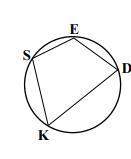
Mathematics, 09.07.2019 20:10 HoneySoft
It is known that roughly 2/3 of all human beings have a dominant right foot or eye. is there also right-sided dominance in kissing behavior? an article reported that in a random sample of 115 kissing couples, both people in 70 of the couples tended to lean more to the right than to the left. (use α = 0.05.)
a) if 2/3 of all kissing couples exhibit this right leaning behavior, what is the probability that the number in a sample of 115 who do so differs from the expected value by at least as much as what was actually observed?
b) does the result of the experiment suggest that the 2/3 figure is implausible for kissing behavior? state and test the hypothesis.

Answers: 3
Another question on Mathematics

Mathematics, 21.06.2019 16:00
()1. how do you find range? 2.the following set of data is to be organized into a histogram. if there are to be five intervals on the graph, what should the length of each interval be? 30, 34, 23, 21, 27, 25, 29, 29, 25, 23, 32, 31
Answers: 1

Mathematics, 21.06.2019 18:30
Tod does not have any cookies. david gives jeff 8 cookies. then he splits half of the cookies he has left with tod. david let’s c represent the number of cookies that he starts with. he finds the number of cookies that tod has is 1/2 the difference of c and 8. write an expression to represent the number of cookies that tod has.
Answers: 2

Mathematics, 21.06.2019 19:10
Alogical argument that is presented in graphical form using boxes and arrows is called?
Answers: 1

Mathematics, 21.06.2019 20:30
William invested $5000 in an account that earns 3.8% interest, compounded annually. the formula for compound interest is a(t) = p(1 + i)t. how much did william have in the account after 6 years? (apex)
Answers: 2
You know the right answer?
It is known that roughly 2/3 of all human beings have a dominant right foot or eye. is there also ri...
Questions

History, 16.03.2020 17:50


Chemistry, 16.03.2020 17:50


Mathematics, 16.03.2020 17:50


Advanced Placement (AP), 16.03.2020 17:50






English, 16.03.2020 17:51





Mathematics, 16.03.2020 17:51

Computers and Technology, 16.03.2020 17:51




